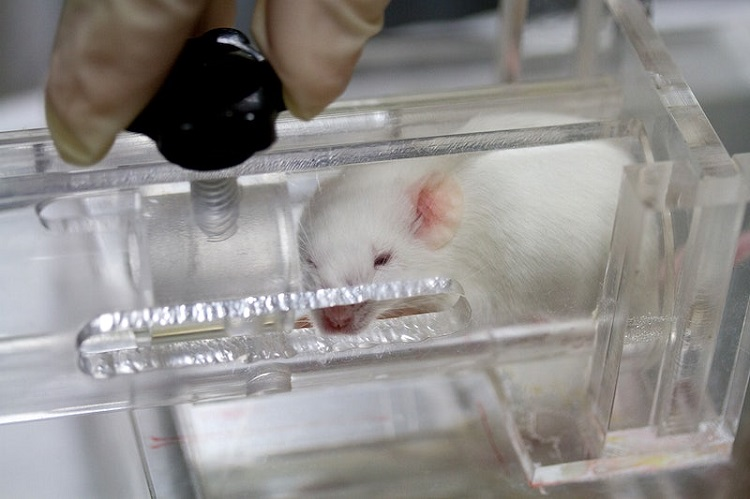1. Decreased Funding

One of the most significant ways the Trump administration may shape the future of animal testing is through diminished funding. Federal research programs that rely on animal testing have historically received substantial government support, but shifting priorities and regulatory changes could lead to a reduction in these funds. The administration’s broader push for deregulation and budget cuts to scientific research suggest that animal testing programs may face financial constraints. With a focus on reducing government spending and streamlining bureaucratic processes, agencies like the Environmental Protection Agency (EPA) and the National Institutes of Health (NIH) may see funding for animal-based studies deprioritized in favor of alternative research methods.
Additionally, there is a growing push—both within the scientific community and from public advocacy groups—to move away from traditional animal testing in favor of more ethical and technologically advanced alternatives. The Trump administration’s emphasis on business-friendly policies and cost-cutting measures may accelerate this transition, as private industries seek more efficient and less controversial methods for testing. If federal agencies reduce their reliance on animal testing, it could lead to a broader shift in research funding, encouraging investment in artificial intelligence, organ-on-a-chip technology, and other innovative alternatives that promise greater accuracy and ethical viability. This potential decrease in funding could mark a turning point in how scientific studies are conducted, shaping the future of animal testing for years to come.
2. Revisions to the Endangered Species Act

The Trump administration made significant revisions to the Endangered Species Act (ESA), altering how species are protected and how their habitats are designated. In 2019, regulatory changes introduced economic considerations into listing decisions, potentially prioritizing business interests over conservation. The administration also removed the “blanket rule,” which had previously extended automatic protections to newly listed threatened species, leaving them vulnerable to exploitation. Additionally, changes to the definition of “critical habitat” reduced the areas eligible for protection, making it harder to safeguard species affected by climate change. These revisions, coupled with efforts to streamline federal project approvals, raised concerns that the ESA’s effectiveness in preserving biodiversity had been significantly weakened. Conservation groups argued that these changes prioritized development over ecological sustainability, undermining long-standing protections for at-risk wildlife.
3. Revisions to the Animal Welfare Act

According to the National Agriculture Library, the Animal Welfare Act (AWA) is the primary federal law governing the treatment of animals in research. Although the Trump administration did not pass major legislative changes to the Animal Welfare Act (AWA), its enforcement and transparency policies shifted in ways that impacted animal welfare oversight. In 2017, the U.S. Department of Agriculture (USDA) removed public access to inspection and enforcement records related to the AWA, limiting transparency on violations and compliance. While some documents were later restored, many remained unavailable, making it harder to hold facilities accountable for mistreatment. Additionally, budget cuts and staffing reductions at agencies responsible for enforcing animal welfare standards, such as the U.S. Fish and Wildlife Service, further weakened oversight. Critics argued that these changes signaled a broader deregulatory agenda that prioritized reducing regulatory burdens on businesses and industries at the expense of animal welfare and conservation efforts.
4. Impact on Global Testing Standards

The Trump administration’s approach to animal testing has significant implications for global testing standards. In 2019, under EPA Administrator Andrew Wheeler, the Environmental Protection Agency (EPA) announced plans to reduce mammal testing by 30% by 2025 and eliminate it entirely by 2035. This initiative aimed to promote alternative testing methods and set a precedent for regulatory agencies worldwide.
Additionally, the Trump administration’s broader deregulatory agenda, including efforts to weaken the Endangered Species Act and other environmental protections, has raised concerns among international stakeholders about the U.S.’s commitment to animal welfare and conservation. These policy changes could influence global discussions on testing standards, as countries reassess their positions in response to shifting U.S. policies. The interplay between domestic policy decisions and international standards underscores the importance of consistent leadership in promoting ethical and scientifically sound practices in research and testing.
5. Increased Transparency Requirements

In his second term, President Trump has implemented measures aimed at increasing transparency within federal agencies, particularly concerning financial accountability. On February 26, 2025, he signed an executive order expanding the authority of the Department of Government Efficiency (Doge), led by Elon Musk. This order mandates that all federal agencies establish systems to record and justify payments, with the potential for public disclosure. Agencies are now required to submit monthly reports detailing their contracting activities, although exemptions apply to sectors such as law enforcement, military, immigration, and national security.
However, this focus on financial transparency has been accompanied by actions that reduce transparency in other areas. Notably, the administration has removed or altered over 8,000 web pages and approximately 3,000 datasets across multiple federal agencies. These changes primarily affect content related to diversity, equity, inclusion initiatives, gender identity, public health research, and environmental policy. For instance, the Centers for Disease Control and Prevention (CDC) have been directed to retract unpublished research containing specific terms related to gender and LGBTQ+ topics. These actions have sparked legal challenges and raised concerns about the accessibility of government data and the potential censorship of scientific research. While the administration emphasizes fiscal transparency, these concurrent reductions in public access to certain information have led to debates about the overall impact on transparency and accountability within federal agencies.
6. Defunding Painful Testing on Pets

In January 2025, President Trump announced plans to eliminate funding for experiments that subject dogs and cats to painful procedures. This initiative aims to cut approximately $20 billion in government spending on such research annually. The administration’s strategy includes defunding domestic and international projects that involve invasive testing on pets, responding to public concerns over animal welfare and fiscal responsibility. Notably, a national poll indicated that 85% of taxpayers oppose government-funded painful tests on pets.


